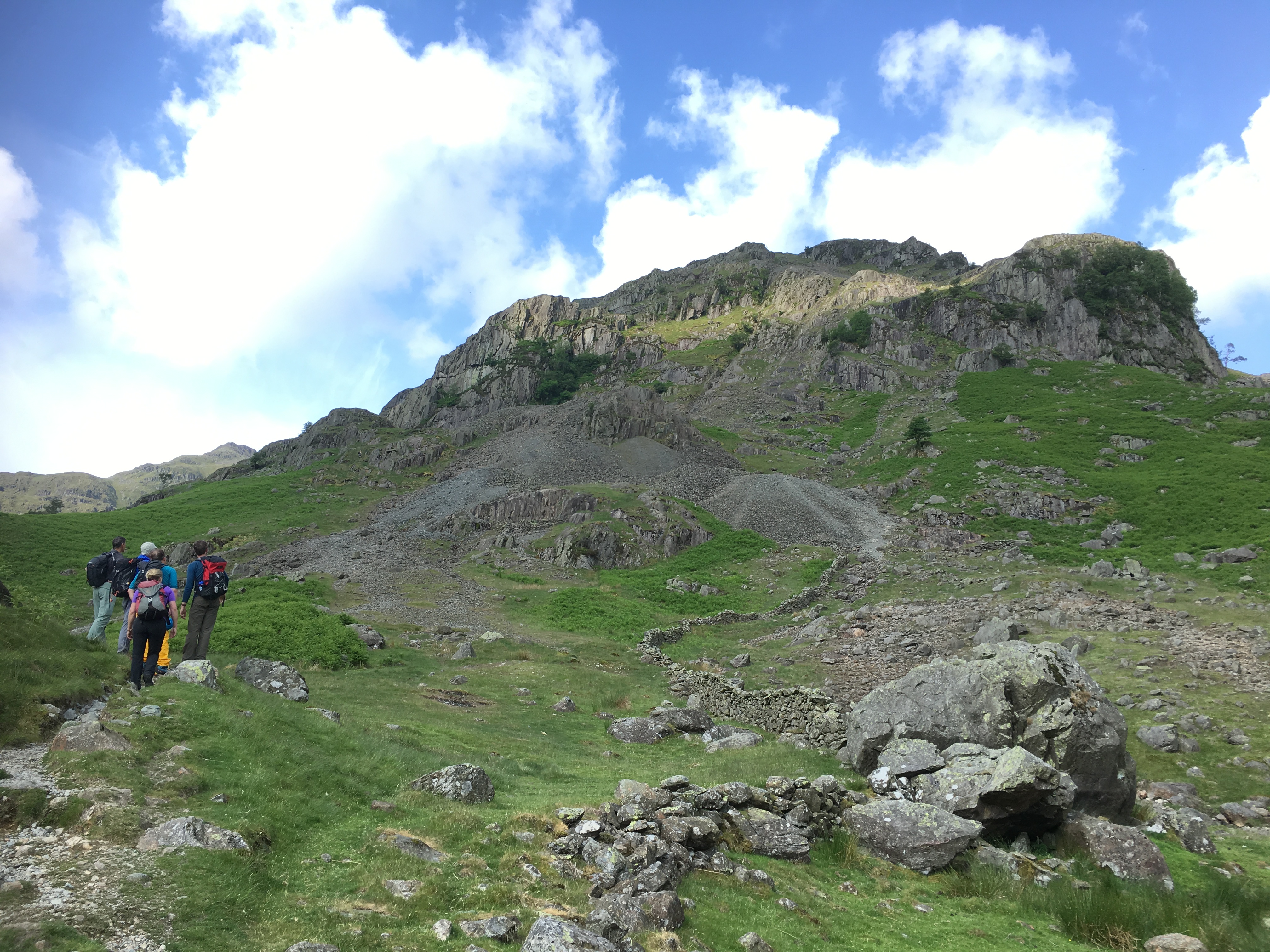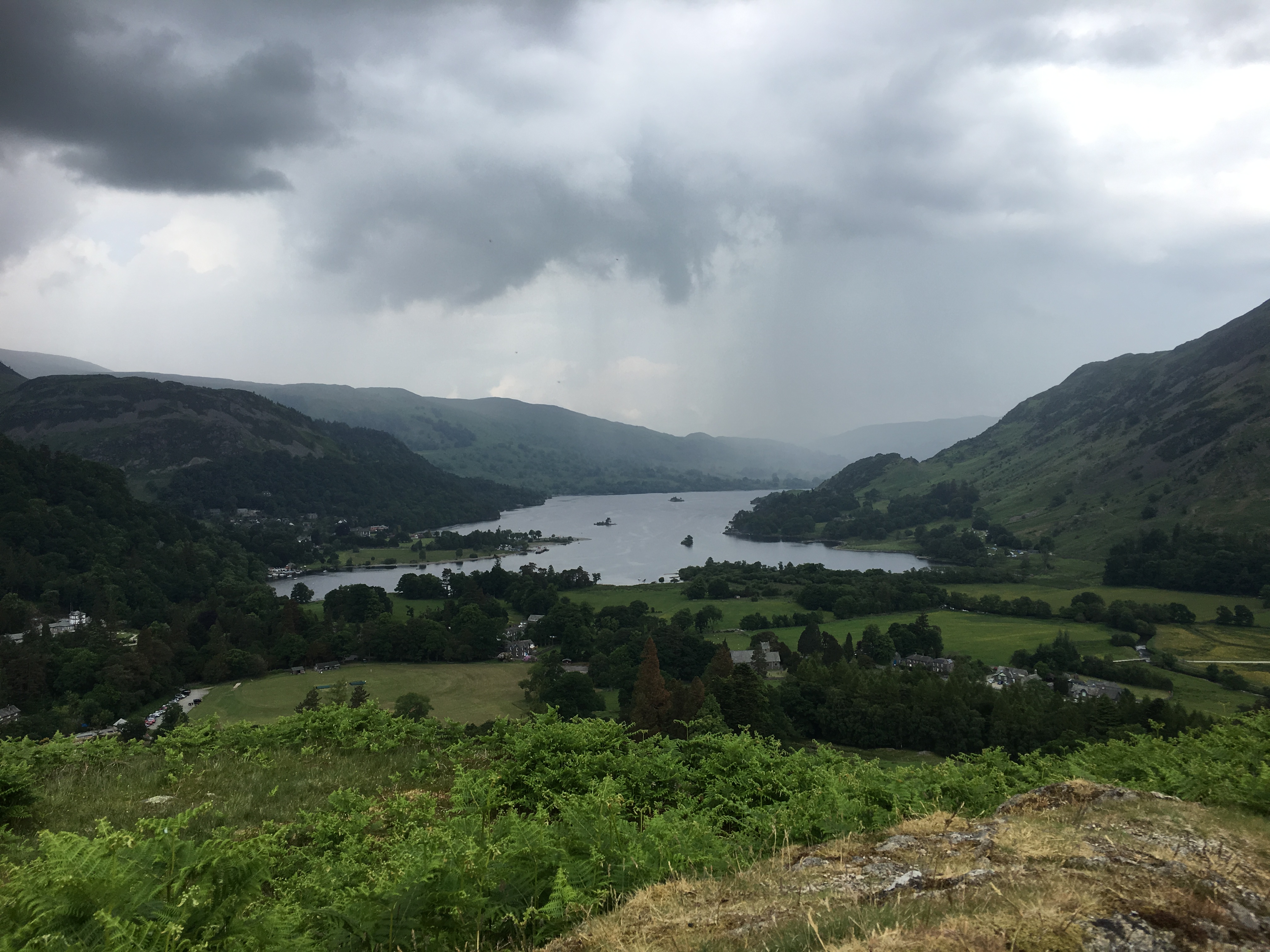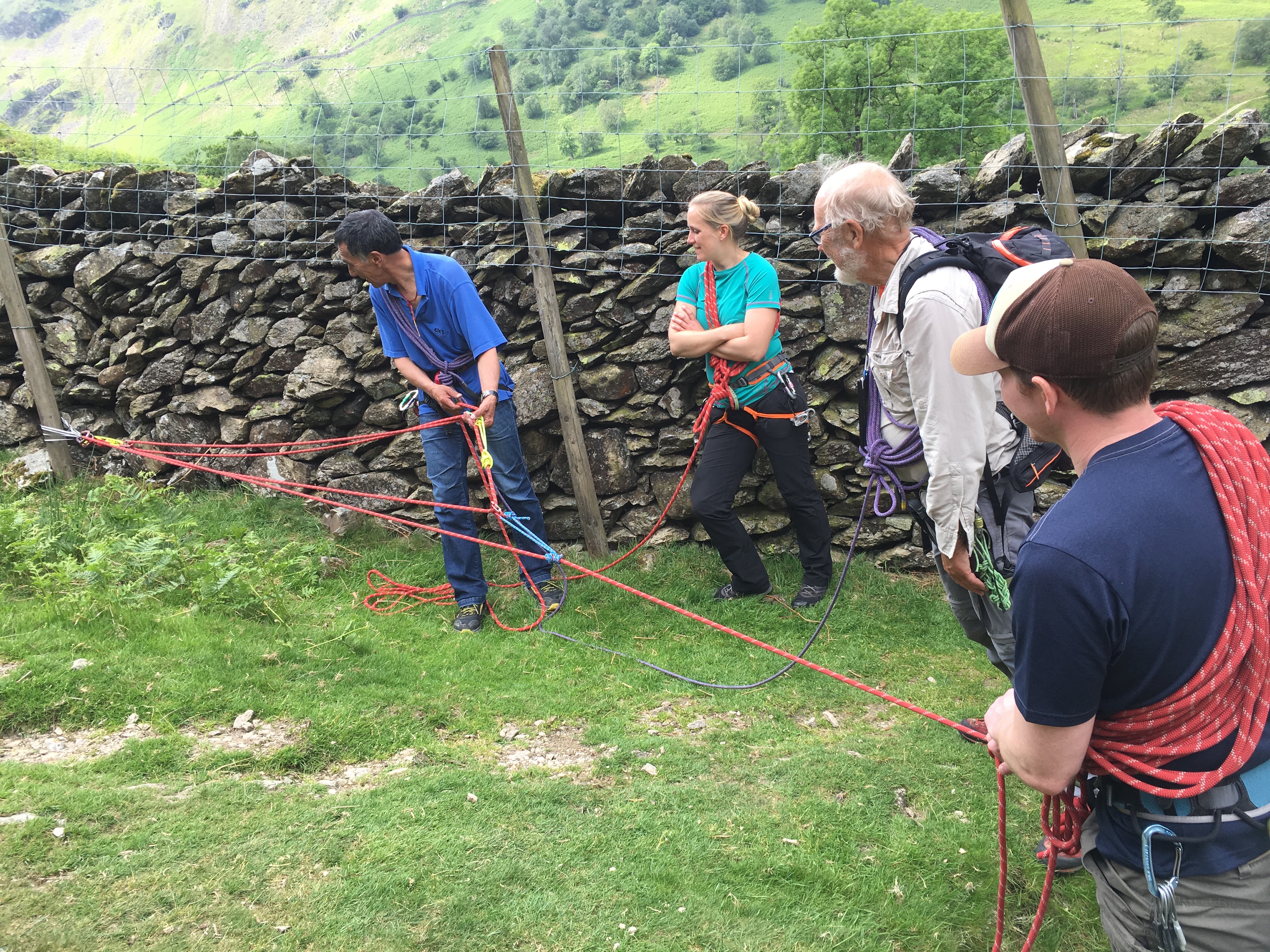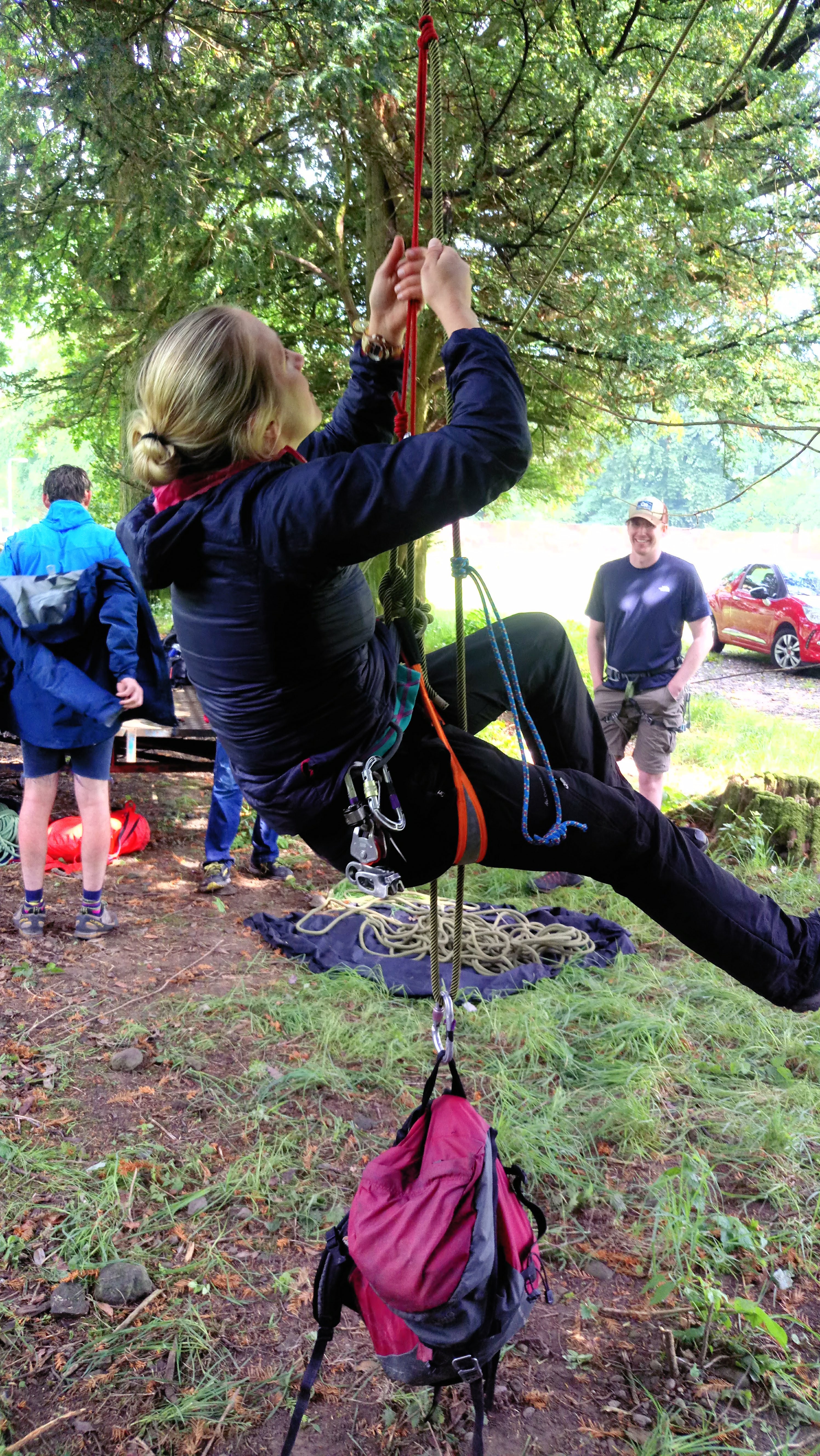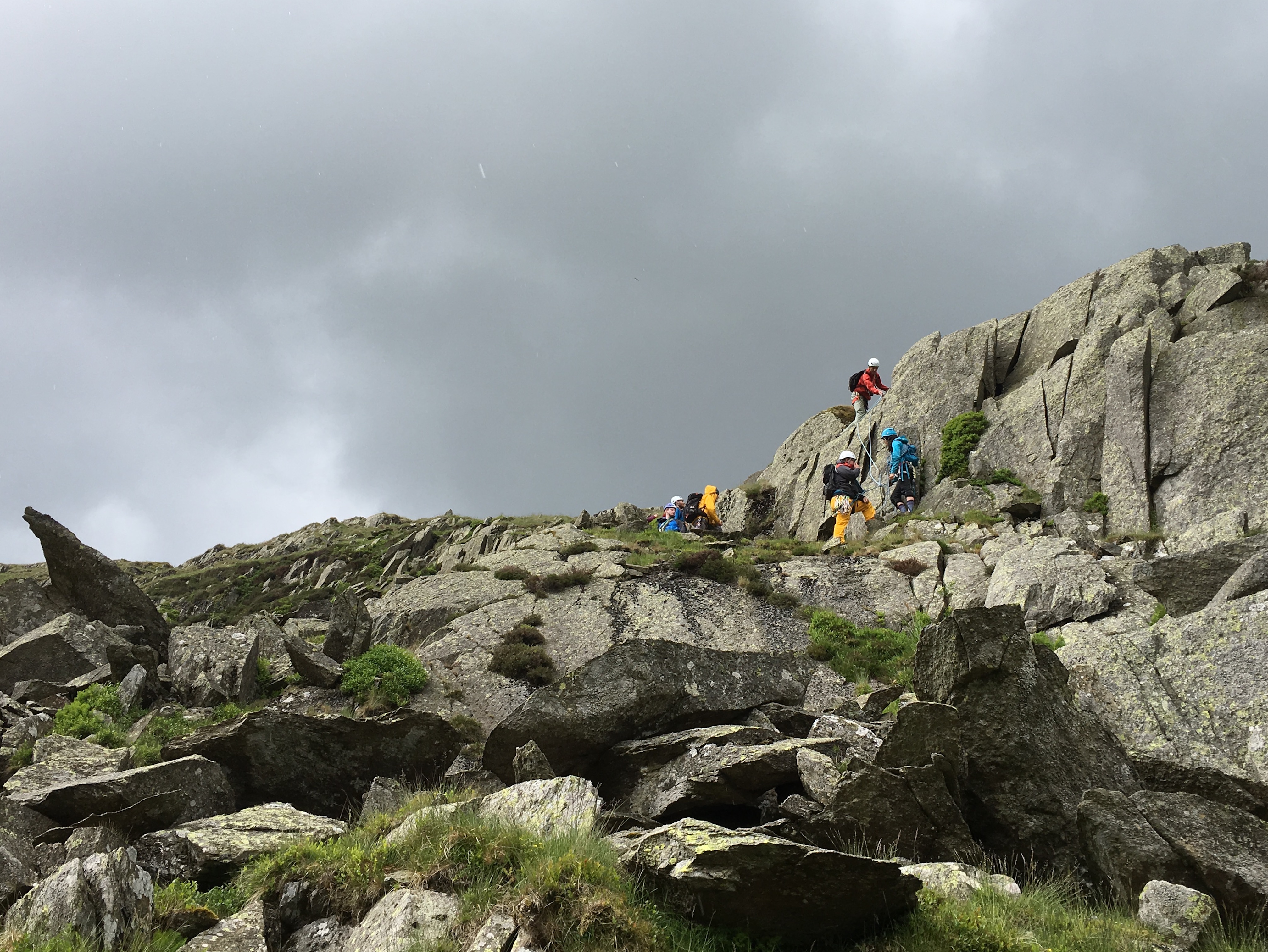Alpine Club UK Introductory meet 8-10 June 2018
At the beginning of June we set off in our van for a multi week adventure of UK climbing and beautiful scenery.
The only real commitment I had on the trip was the Alpine Club UK Introductory meet in the Lake District the first weekend we were away. On the Friday of the meet we drove up from the Peak District where we had been climbing and headed towards the George Starkey hut in Patterdale.
Meeting everyone
We were the first to arrive and I spent a while sorting out gear in the sunshine behind the hut before other people started to filter in. For whatever reason, I often feel apprehensive about these kind of events; not knowing what it will be like and spending time with lots of new people, but my fears were totally unfounded.
At around 9.30pm everyone went off to the pub and I decided to join the bonding session despite my usual bedtime of 10pm! At 12.30pm I wandered back to the van excited to get out in the hills the next day.
Saturday
On Saturday we all gathered for a brief introductory chat from the organisers Giles Robertson and Nat Villarroel and a talk from Rob Collister, one of the three experienced Alpine guides there to bestow their wisdom on us. The others were Nick Kekus and Victor Saunders, both of whom I had the pleasure of being instructed by over the weekend.
Once introduced and a general plan for the weekend was put in place, we were split into three groups for rope work skills. Our group of six went to a very small crag just up the road from the hut with our guide Victor, and Mike Parsons, the Chair of the George Starkey hut and an all-round techie fountain of knowledge. Victor showed us how to take in rope coils and move together over terrain in an alpine style, losing and taking in coils as necessary. He then showed us how to do a crevasse rescue and we were all encouraged to ‘watch one, do one, teach one’ to ensure we had ‘got it’. Crevasse rescue is a last resort when the person who has gone in is unable to get themselves out. One of the big questions that came up was how to rescue someone significantly heavier than ourselves, Victor showed us the 9-to-1 pulley system that helps do just that.
It was useful for me to reinforce my rope work skills as well as learning new, improved techniques but I think I gained the most from all the little gems of advice, the things that really make a difference when you are up against it time wise, when you have to make a decision on your own or when things get really serious. The sorts of things that people like Victor, Rob and Nick have all learnt the hard way.
Then came the rain. The next skill to cover was prusiking, a method of moving up the rope using two loops of cord or slings (one attached to your harness and one as a ladder rung for your foot) which bite the rope allowing you to move one up whilst weighting the other - a much easier alternative to pulling yourself up a rope! So, we went on a hunt to find a tree, not only with the perfect height and diameter branch to swing a rope over, but also one with a big enough canopy to keep us and the rope fairly dry. Not the easiest task in the pouring rain.
We wandered around the village for a while until we found the most suitable tree, we had a very picky group. Then we got prusiking up it. I really enjoyed this, so much so that on a climb the next week, rather than climb a tricky bit I decided to prusik up a few metres. Not great form but fun.
That evening we all went back to the hut and got ready for the dinner that Giles, Nat and Sophie had prepared for us. North African Sweet Potato Stew, rice and couscous followed by fruit crumble - exactly what you want after a day out having done very little exercise.
We had three talks during dinner. The first, from Nick about fun places to go alpine climbing with some really useful resources on where to look for routes and advice. One of the routes that really stuck with me was the North Face of the Badile which looks fairly easy and very beautiful.
Then there was a talk from Mike about nutrition and hydration in the mountains. I found it quite interesting how little water the guides take up into the mountains considering how important it is to stay hydrated. A widely adopted system seems to be to drink lots of fluids when you get back and before you go out but then take very little (Rob Collister only takes half a litre) out with you to save space and weight.
Finally, there was a great talk from Victor about risk. He really made me think about how to tackle an objective with regards to risk; deciding how likely it is that something might happen and what the consequences could be. What’s the best time to go after a climb, should you spend a little more time circumnavigating a potential risk or take other precautions of some sort. Studies on safety gear are also interesting, indicating that it may make us and others around us more careless, giving us the illusion of safety so that we are more likely to do dangerous things. Food for thought. One of his key messages was to climb with people who you can communicate with about risk and never with those who put you in more danger than you are comfortable with, thankfully not a situation I have encountered thus far.
Sunday
Sunday was a day to put the things we had gone over on Saturday to the test. A group of us started off up to Eagle Crag near Striding Edge with Nick. At the crag we paired up and roped up, taking in some coils.
We started to lead off on small sections of easy ground putting in the odd bit of gear and using the natural rock formations to protect our climbs. My partner Sarah and I had a lot of fun exploring all the ways to make the ground a little more adventurous and made our sloping ground arrests a little more dramatic than they needed to be.
We still had a long way to go before reaching Striding Edge when it was time to head back to the hut to help clear up. The relaxed atmosphere of the weekend along with advice from experienced alpinists made the weekend a success in terms of new knowledge and confidence but it was also great to hang out with people from all kinds of different climbing/non-climbing backgrounds, with a huge range of objectives in the mountains. I have put to rest my reservations about going on one of these trips and would definitely go again. I gained a lot of ‘insider’ knowledge form the guides, made some new climbing friends and really enjoyed the whole experience.
